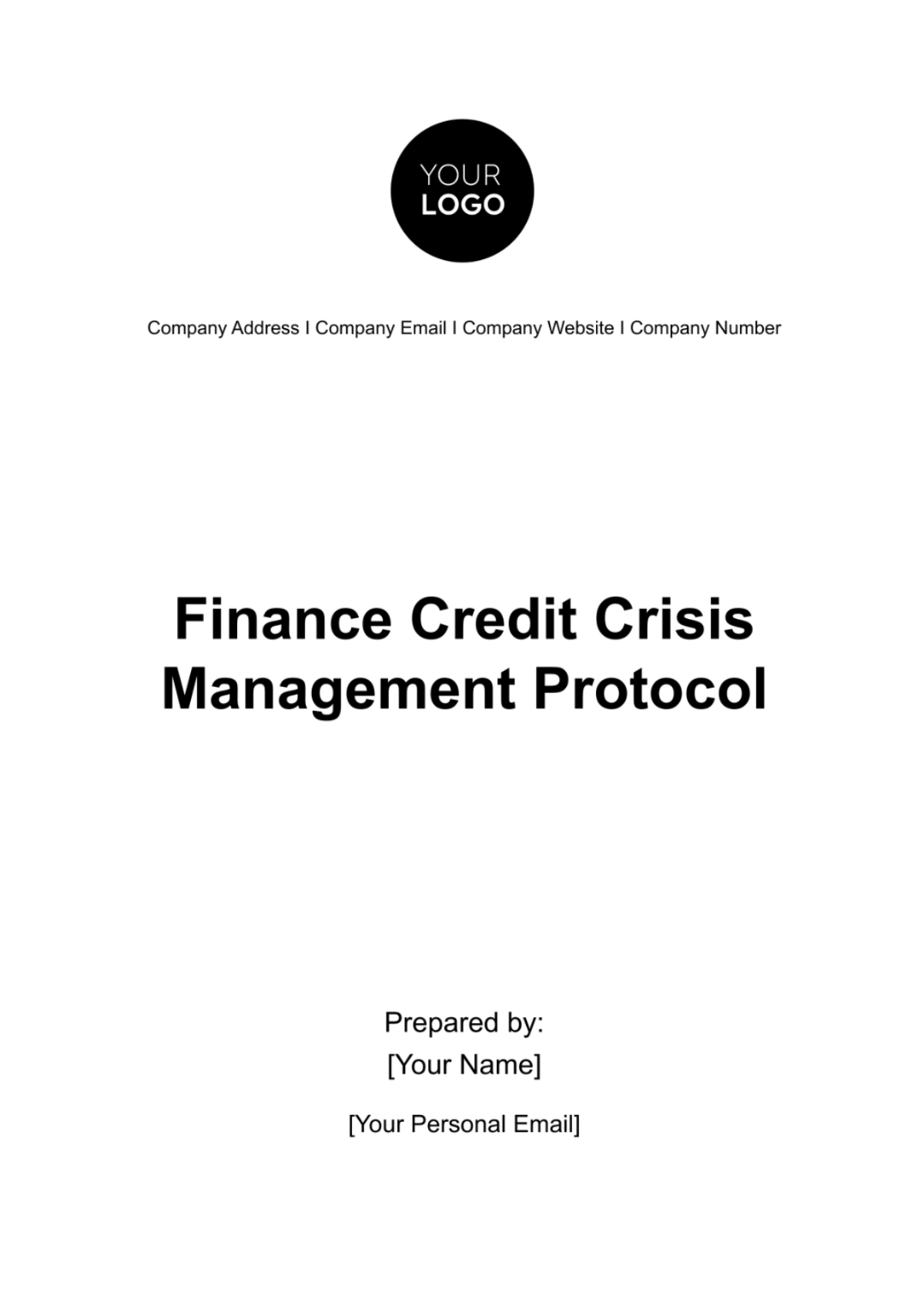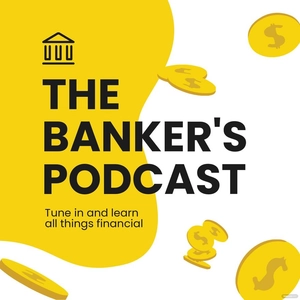Free Finance Credit Crisis Management Protocol

TABLE OF CONTENTS
I. Crisis Identification and Assessment
II. Communication Strategy
A. Internal Communication
B. External Communication
III. Crisis Containment Measures
A. Immediate Actions
B. Resource Allocation
IV. Recovery and Restructuring Plan
A. Short-term Recovery Measures
B. Long-term Restructuring Initiatives
V. Post-Crisis Analysis and Learning
A. Performance Review
B. Lessons Learned and Policy Updates
I. Crisis Identification and Assessment
Early Warning Signals: The ability to identify early warning signs of a credit crisis is crucial for the stability of [Your Company Name]. Our staff, across all departments, should be adept at recognizing these indicators, which can range from abrupt changes in customer payment trends to unusual fluctuations in credit portfolio performance. Additionally, external market indicators, such as economic downturns or sector-specific distress, must be closely monitored. This continuous vigilance is not limited to the finance team; it requires a company-wide culture of awareness and responsiveness. Training programs and regular briefings will be instituted to ensure that all employees are equipped to spot these early signals and understand the appropriate channels for reporting them, enabling a proactive approach to crisis management.
Crisis Assessment: Once early warning signals are detected, a swift and thorough assessment of the situation is vital. The crisis management team must evaluate the extent of the threat to our financial operations. This includes analyzing the scale of exposure across different credit segments, understanding the vulnerability of our portfolios, and predicting the possible ripple effects throughout our financial systems. This assessment should not only quantify the potential financial impact but also consider the broader implications for our reputation and client relationships. A multidisciplinary approach, involving insights from risk management, finance, and market analysis teams, will be employed to ensure a comprehensive understanding of the crisis. This thorough evaluation is the cornerstone of our response strategy, underpinning every decision and action taken to navigate the crisis.
II. Communication Strategy
Effective communication, both internally and externally, is a cornerstone of managing a credit crisis. It ensures that all stakeholders are informed, aligned, and responsive. This section delineates our strategy for clear, timely, and accurate communication, vital in maintaining trust and operational coherence during a crisis.
A. Internal Communication
Establish clear channels for swift and secure internal communication. All relevant departments, including finance, risk management, and executive leadership, must be immediately informed about the crisis. Regular updates should be provided as the situation evolves.
Establishing a Centralized Communication Hub: A dedicated communication channel, such as an intranet portal or a crisis management hotline, will be established for disseminating information. This hub will serve as the primary source for all updates, ensuring consistency in messaging.
Roles and Responsibilities: Designating communication leads in each department ensures that the flow of information is coordinated and timely. These leads will be responsible for cascading information within their teams and providing feedback to the crisis management team.
Regular Briefings: Regular briefings and meetings will be scheduled to keep all departments informed. This includes daily updates for the executive team and weekly updates for all staff. These briefings will cover the status of the crisis, actions taken, and any anticipated impacts on operations.
B. External Communication
Develop a strategy for transparent and timely communication with external stakeholders, including investors, clients, and regulatory bodies. The focus should be on providing factual information, maintaining confidence, and complying with regulatory disclosure requirements.
Clear Messaging: External communications will focus on delivering clear, factual, and concise information. This includes regular press releases, updates on the company website, and direct communications to key stakeholders.
Stakeholder Engagement: Proactive outreach to investors, clients, and regulatory bodies will be a priority. This includes personalized communications to major clients and investors, and timely reporting to regulatory agencies.
Media Relations: A designated spokesperson will handle all media inquiries to ensure a unified and coherent message. Media training will be provided to key personnel to ensure they are prepared to address questions and maintain the company's reputation.
Regulatory Compliance: All external communications will adhere to legal and regulatory requirements. This includes ensuring that any public statements are in compliance with financial disclosure regulations and any industry-specific communication protocols.
III. Crisis Containment Measures
In this section, we outline specific containment measures designed to immediately address and mitigate the effects of a credit crisis at [Your Company Name]. These measures are critical in stabilizing the situation and preventing further escalation. We also detail our approach to resource allocation, ensuring that the necessary financial, human, and technological resources are effectively mobilized and utilized during the crisis.
A. Immediate Actions
Implement immediate containment measures to limit the impact. This may include activating emergency credit lines, reassessing risk exposure, and temporarily revising credit policies. The priority is to stabilize the situation and prevent further escalation.
Immediate Action | Potential Impact | Importance |
Activate Emergency Credit Lines | Provides immediate liquidity | Essential for maintaining operations and meeting urgent financial obligations |
Reassess Risk Exposure | Identifies vulnerable areas in the portfolio | Crucial for preventing further losses and mitigating risk |
Revise Credit Policies Temporarily | Restricts exposure to high-risk clients | Reduces the likelihood of escalating the crisis |
Increase Monitoring of Credit Operations | Ensures real-time assessment of the situation | Allows for swift identification of problem areas and immediate action |
Communicate with Key Stakeholders | Maintains transparency and trust | Critical for managing perceptions and maintaining stakeholder confidence |
B. Resource Allocation
Efficiently mobilize and allocate resources, including financial, human, and technological, to manage the crisis. This includes forming a dedicated crisis management team and ensuring they have the necessary tools and authority to act decisively.
Resource Type | Allocation Method | Description |
Financial Resources | Emergency Fund Access | Allocating a designated emergency fund to address immediate financial needs during the crisis. |
Human Resources | Crisis Management Team Formation | Forming a dedicated team of experts in risk management, finance, and communications to lead the crisis response. |
Technological Resources | Enhanced IT Support | Prioritizing IT support for critical systems to ensure uninterrupted operations and data security. |
Operational Resources | Redistribution of Tasks | Temporarily redistributing tasks and responsibilities to focus on critical operations and crisis management. |
Informational Resources | Data Analysis and Reporting | Utilizing advanced analytics and reporting tools to provide real-time data for decision-making. |
IV. Recovery and Restructuring Plan
This section delineates the measures and initiatives required for both short-term recovery and long-term restructuring of the Finance Credit System at [Your Company Name]. These steps are essential to stabilize the immediate situation and ensure sustainable improvements to prevent future crises.
A. Short-term Recovery Measures
Outline actions for immediate stabilization, such as restructuring troubled credit portfolios, enhancing liquidity management, and engaging with affected clients to renegotiate terms where necessary.
Measure | Description | Expected Outcome |
Restructure Troubled Credit Portfolios | Reassessing and realigning at-risk credit portfolios to mitigate losses. | Reduced risk and stabilized financial position. |
Enhance Liquidity Management | Implementing strategies to improve cash flow and liquidity. | Ensures availability of funds for critical operations. |
Engage with Affected Clients | Proactively renegotiate terms with clients impacted by the crisis. | Maintains client relationships and eases financial stress. |
Accelerate Debt Recovery Processes | Intensifying efforts to collect outstanding debts. | Improves cash inflow and financial stability. |
Temporary Suspension of High-Risk Lending | Halting or limiting new credit issuance in high-risk categories. | Prevents exacerbation of the crisis and limits further risk exposure. |
B. Long-term Restructuring Initiatives
Develop a strategic plan for long-term recovery and restructuring. This should focus on addressing the root causes of the crisis, revising credit risk assessment models, and implementing more robust risk management practices.
Initiative | Benefit |
Revise Credit Risk Assessment Models | More accurate identification of potential risks, leading to better decision-making. |
Implement Advanced Data Analytics | Enhanced capability to predict and manage risks using data-driven insights. |
Diversify Credit Portfolio | Reduces dependency on any single credit segment and spreads risk. |
Strengthen Compliance Protocols | Ensures adherence to regulatory standards and minimizes legal risks. |
Invest in Staff Training | Equips employees with the skills to effectively manage revised systems and policies. |
Upgrade Technological Infrastructure | Supports the implementation of new risk management tools and practices. |
Establish Regular Review Mechanisms | Enables ongoing assessment and timely adjustments to credit strategies. |
V. Post-Crisis Analysis and Learning
This critical phase in the Finance Credit Crisis Management Protocol involves evaluating our response to the crisis and integrating the lessons learned into our future strategy. It's essential to examine both the effectiveness of our actions and the insights gained, ensuring continuous improvement in our crisis management capabilities.
A. Performance Review
Post-crisis, a comprehensive performance review will be conducted to objectively assess how the crisis was managed. This evaluation will focus on response times, the efficiency and effectiveness of the decision-making processes, and the impact of the actions taken. The review will analyze every stage of the crisis response, from the initial detection and assessment through to the containment and recovery phases. Key metrics such as financial losses mitigated, customer retention rates, and operational disruptions will be scrutinized. This assessment will be carried out by an independent internal team, possibly supported by external consultants, to ensure impartiality and thoroughness. The goal is to paint a clear picture of our strengths and weaknesses during the crisis, providing valuable insights for improvement.
B. Lessons Learned and Policy Updates
An integral part of the post-crisis phase is identifying and documenting the lessons learned. This exercise is not merely about pinpointing what went wrong, but also about recognizing what worked well and why. Insights gained from this process will be used to refine our crisis management protocols, update policies, and revise procedures. Training programs will be adjusted to incorporate these learnings, ensuring all staff members are better prepared for future crises. This continuous learning approach is vital for [Your Company Name] to adapt and evolve its crisis management strategies, making our financial systems more resilient and responsive to the challenges of an ever-changing financial landscape.
- 100% Customizable, free editor
- Access 1 Million+ Templates, photo’s & graphics
- Download or share as a template
- Click and replace photos, graphics, text, backgrounds
- Resize, crop, AI write & more
- Access advanced editor
Achieve financial stability with Template.net's Finance Credit Crisis Management Protocol. Designed to be editable and customizable, it provides a systematic approach to managing credit crises. Utilize our Ai Editor Tool to tailor it to your situation. This Protocol opens the path to resolving financial woes. Get it now.





























